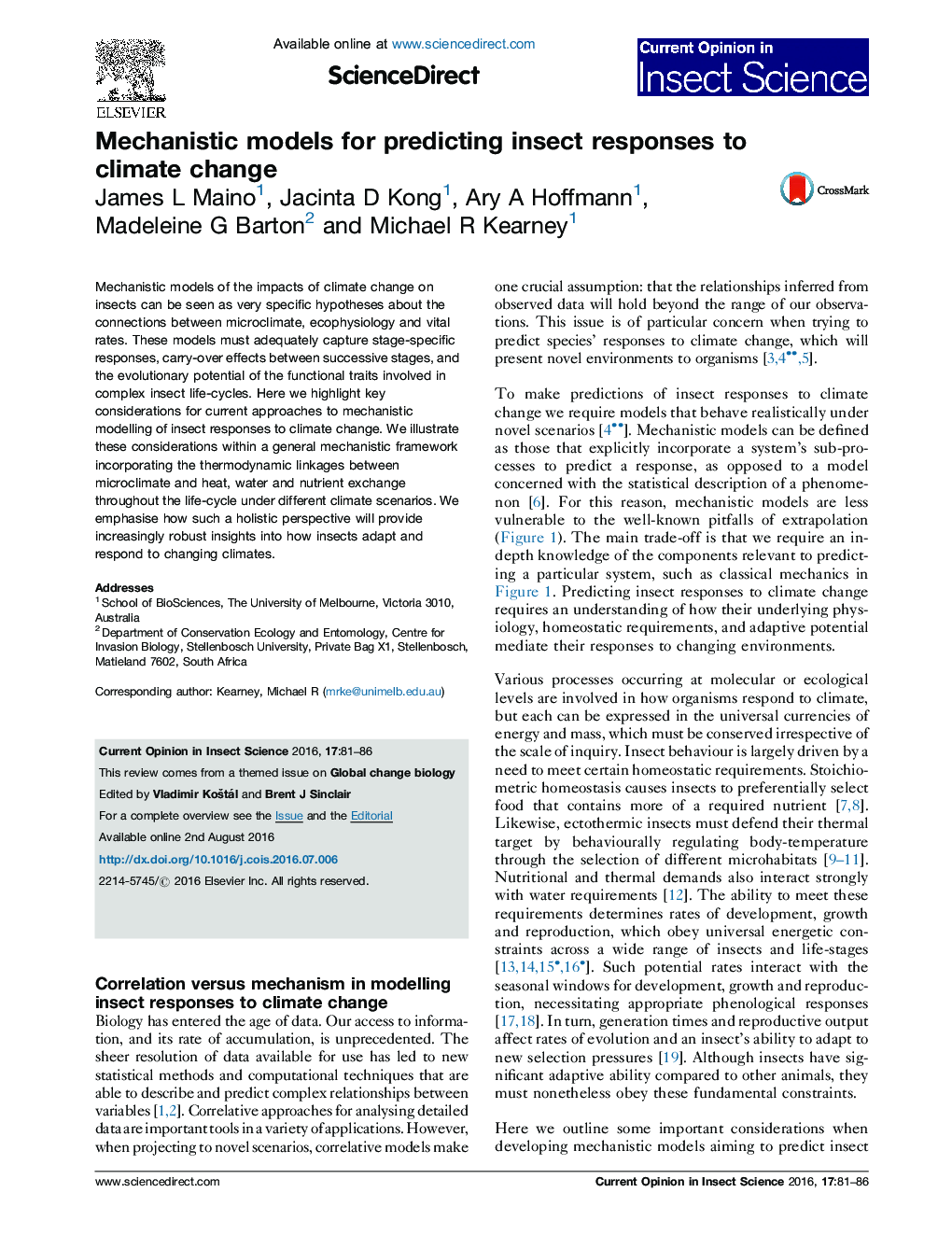| Article ID | Journal | Published Year | Pages | File Type |
|---|---|---|---|---|
| 6374029 | Current Opinion in Insect Science | 2016 | 6 Pages |
â¢Mechanistic models incorporate knowledge of subprocesses to predict higher level phenomena.â¢We identify key subprocesses for mechanistically predicting insect responses to climate change.â¢The insect microclimate, life-cycle, and evolutionary responses in this context are reviewed.â¢An illustrative example for the Common Brown butterfly under climate change is presented.
Mechanistic models of the impacts of climate change on insects can be seen as very specific hypotheses about the connections between microclimate, ecophysiology and vital rates. These models must adequately capture stage-specific responses, carry-over effects between successive stages, and the evolutionary potential of the functional traits involved in complex insect life-cycles. Here we highlight key considerations for current approaches to mechanistic modelling of insect responses to climate change. We illustrate these considerations within a general mechanistic framework incorporating the thermodynamic linkages between microclimate and heat, water and nutrient exchange throughout the life-cycle under different climate scenarios. We emphasise how such a holistic perspective will provide increasingly robust insights into how insects adapt and respond to changing climates.
Graphical abstractDownload full-size image
